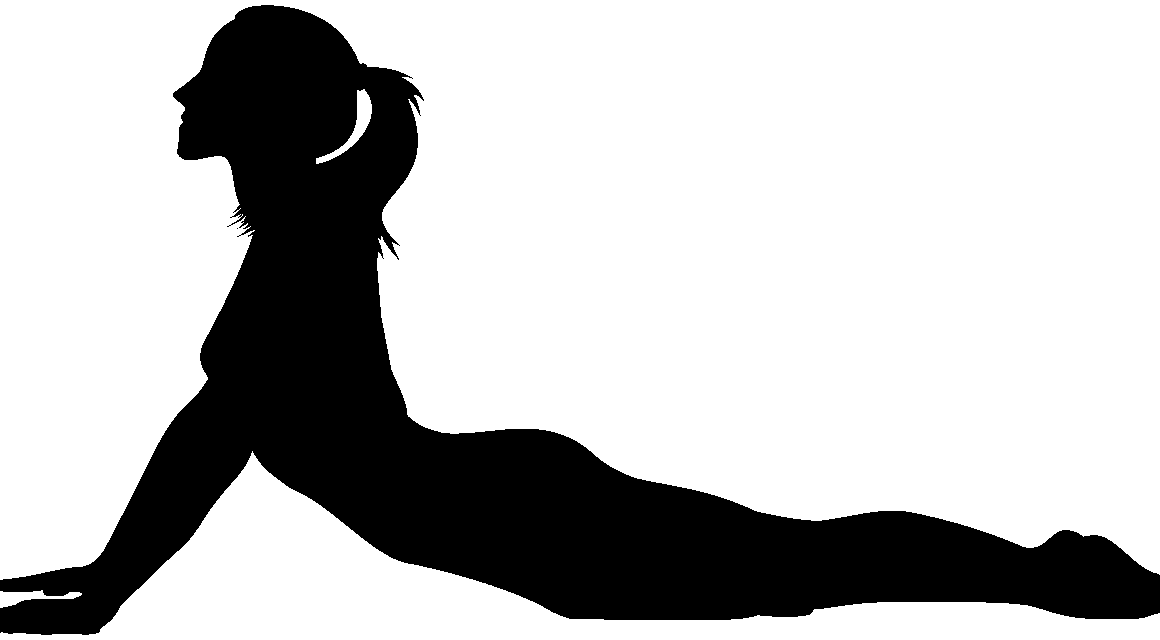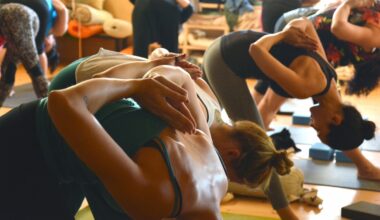The Rise of Pilates in Modern Fitness Routines
In recent years, Pilates has gained significant popularity in the fitness industry, becoming a sought-after workout routine for people of all ages. The increasing awareness of health and well-being has prompted individuals to seek low-impact, effective exercise options. Pilates focuses on mental and physical conditioning, emphasizing core strength, flexibility, and overall body awareness. Additionally, the adaptability of Pilates exercises allows various modifications suitable for every fitness level, making it inclusive. This aspect significantly contributes to its appeal among beginners and seasoned athletes alike. Furthermore, Pilates offers a method to combat the sedentary lifestyle that has become prevalent today. It provides a unique approach to achieving better posture while relieving tension accumulated in the body. Many fitness studios now include Pilates classes in their schedules, reflecting the trend towards holistic fitness practices. According to industry reports, group classes are increasingly popular, creating a community atmosphere that fosters motivation amongst participants. The structured nature of Pilates workouts encourages personal growth, allowing practitioners to track their progress over time. As a result, more people are integrating Pilates into their weekly routines to enhance their physical and mental health.
This rise can be attributed to the evolving fitness landscape, where trends constantly shift to meet consumer demands. The integration of technology into fitness routines has also played a role in promoting Pilates. Virtual platforms and applications have emerged, making Pilates more accessible to individuals who prefer home workouts. Online classes allow practitioners to engage with instructors and fellow students worldwide, fostering a sense of community and support through digital mediums. Furthermore, social media has amplified the visibility of Pilates workouts, inspiring individuals through instructors’ posts showcasing various routines. Influencers often share their personal experiences and results, attracting new followers to the discipline. This aspect of the modern workout culture encourages participation among millennials and Gen Z who are physically active yet seek convenience. Additionally, Pilates training provides a wealth of information and educational resources, focusing on anatomy and body mechanics. Many are keen on understanding the science behind their workouts, and Pilates provides this insight through workshops and certifications. The focus on proper alignment can lead to injury prevention, which is a significant concern among many exercisers today.
The flexibility and variety within Pilates routines contribute to its enduring popularity. Practitioners can choose from diverse styles ranging from traditional mat Pilates to reformer and even specialized classes like chair Pilates. This variety allows for tailored experiences in different environments, whether during personal training sessions or group settings. Studios now offer high-intensity Pilates classes that infuse cardio elements, appealing to fitness enthusiasts looking for a dynamic workout. Furthermore, fusion classes combining Pilates with other fitness modalities, such as yoga or barre, are becoming prevalent, enhancing your workout experience. The market’s response to consumer desires plays a crucial role in shaping these trends. Fitness studios are continually innovating to keep offerings fresh and engaging, catering to clientele searching for new challenges in their fitness journey. With the rise of wellness-oriented lifestyles, Pilates frequently becomes a trusted choice for mental health and relaxation. Breathing techniques practiced in Pilates also contribute to reduced stress and improved emotional wellness. The holistic benefits of Pilates are being appreciated more widely, leading to it becoming an essential part of many individuals’ health routines.
The Pilates Community
As the interest in Pilates continues to rise, so does the sense of community surrounding the discipline. Many Pilates studios are characterized by their welcoming environments, promoting connections that extend beyond just workout sessions. This supportive atmosphere encourages individuals to share their fitness journeys, celebrate progress, and motivate each other. The camaraderie developed in group classes often increases commitment levels, making participants more likely to return consistently. Additionally, special events and workshops are frequently organized to foster community spirit, offering opportunities for social interaction and further learning in this craft. The exchange of skills and insights can enhance the overall experience, creating a deeper connection to the practice. Additionally, instructor-led workshops allow participants to deepen their understanding of Pilates methods, strengthening their personal practice. With communities actively engaged in Pilates, it’s evident that this trend is more than a momentary phase; it’s transforming into a lifestyle choice for many. Furthermore, with the incorporation of corporate wellness programs, more workplaces are recognizing the benefits of Pilates. By providing employees access to Pilates classes, companies promote healthier lifestyles that can translate into increased productivity and higher morale.
Research supports the effectiveness of Pilates in improving overall fitness, leading to its acceptance in rehabilitation centers and physical therapy settings. Professionals are discovering how Pilates exercises can aid recovery from various injuries and promote functional movement patterns. By addressing core strength and stability, Pilates can help patients regain their confidence and bodily awareness after injury. The focus on controlled movements promotes safety and encourages clients to trust their bodies. Many fitness trainers are now including Pilates principles in their training regimes, recognizing its versatility across different workout programs. Gyms are integrating Pilates-inspired exercises into traditional strength training, creating hybrid routines that appeal to a broader audience. This approach has allowed Pilates to evolve from a niche genre to a fundamental component of fitness discussions. As more research highlights the physical and mental benefits of Pilates, the relevance of this discipline becomes increasingly undeniable. With evolving teaching methods and continuous innovation within the field, the future looks bright for Pilates enthusiasts. Its adaptability ensures that Pilates will remain integral to fitness trends, supporting everyone’s journey toward improved health and wellness.
Conclusion
In conclusion, Pilates serves as an exemplary model of how a traditional form of exercise can successfully adapt to modern fitness needs. With processes centered around individual goals, Pilates offers the perfect balance between strength, flexibility, and mindful awareness. The versatility and community surrounding Pilates ensure its rise within the fitness industry will continue. As people become increasingly aware of the importance of mental and emotional health, Pilates stands out as a holistic exercise choice capable of addressing multiple fitness aspects. In the coming years, we can expect this trend to evolve further, with studios exploring new formats and modalities that blend Pilates with contemporary fitness techniques. Well-trained instructors, evolving technologies, and a growing body of knowledge surrounding the practice will all contribute to Pilates’ sustained presence in fitness discussions. More research will likely continue validating its numerous benefits, attracting an even wider audience. As Pilates enthusiasts share their passion and experiences online, it creates an inviting entrance for newcomers. The blend of traditional methods with contemporary practices will ensure that Pilates remains a vital element of modern fitness culture.
The rise of Pilates not only reflects a shift towards more mindful exercise but also showcases a growing commitment to holistic health. Fitness lovers now prioritize practices that benefit both the body and mind, which explains Pilates’ enduring appeal. In light of these trends, potential practitioners are encouraged to explore Pilates options in their local communities or online platforms. As fitness professionals continue to innovate and adapt, we can ensure that the evidence-based benefits of Pilates are accessible to everyone seeking a balanced, healthy lifestyle. Ultimately, the future of Pilates in today’s fitness landscape promises exciting opportunities for growth and expansion. Individual practitioners can enrich their fitness journeys, while community involvement will further cement its status in the health and wellness sectors. With a focus on inclusivity, adaptability, and resilience, Pilates is likely to carve its niche as a fundamental means of engaging people in their pursuit of health and happiness. Its future shines brightly as individuals recognize fitness isn’t just about trends; it’s about fostering lasting lifestyle changes that empower them in their daily lives.



